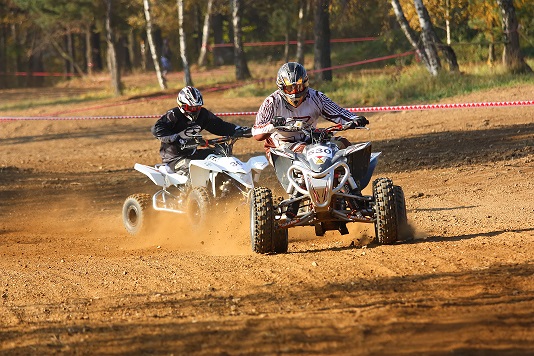ATV Accident Deaths Reach More Than 500
August 19th, 2015/By Admin/In Blog

More than 555 people died (including more than 100 children) in all-terrain vehicle accidents in 2006. An article posted by claimsjournal.com is quoated as stating:
“At least 555 people — including more than 100 children — died in all-terrain vehicle accidents in 2006. Government safety officials expect the number to go much higher as they receive information from coroners and hospitals nationwide.
The Consumer Product Safety Commission estimated that an additional 146,600 people were treated in emergency rooms for ATV-related injuries — more than a quarter of them children.
Consumer groups and parents have complained for years about the safety of ATVs, especially when children ride adult-size vehicles.
The industry contends that it’s not the vehicle but the driver that’s the problem.
‘ATVs have never been shown to be an unsafe product, but there have been bad decisions made by people sitting on the seat,’ said Mike Mount, a spokesman for the California-based Specialty Vehicle Institute of America.
In its annual report, the CPSC said Pennsylvania has had the highest number of reported ATV deaths since 1982, followed by California, West Virginia, Texas and Kentucky. Every state had at least one death attributed to ATVs.
‘The signs are pointing to a very dangerous trend into more than 800 deaths per year,’ said CPSC spokesman Scott Wolfson. The agency is still gathering data as far back as 2003. The report updates CPSC data with numbers from 2006, the latest year that agency staff have analyzed.
In 2005, there were 666 confirmed deaths related to ATVs, and CPSC estimates that the toll for that year could reach 870. While overall injuries have risen steadily since 1997, injuries to children were down from 44,700 in 2004 to 39,300 in 2006.
‘I don’t know that you can find a trend from this data. The bottom line is that more people, and almost as many children, are getting injured seriously by ATVs,’ said Rachel Weintraub, director of product safety and senior counsel at the Consumer Federation of America. ‘This data further documents that we have a real problem.’
The industry declined to comment on the report until it had a chance to review it.
Also, the agency announced the recall of about 95,000 Polaris ATVs because they can have defective control panels that could catch fire. The Minnesota-based company has received 372 reports of smoking and or melting control panels since June 2005, when 45,000 of the ATVs were recalled. There have been another 20 reports of fires. No injuries have been reported.
Most of the deaths and injuries to children are the result of youngsters riding adult-size ATVs, and consumer groups say the agency needs to do more to keep children off ATVs that are too big and too powerful for them.
Weintraub wants the CPSC ban the sale of adult-size ATVs for use for children. The agency has declined to do that.
Under a voluntary agreement between the industry and the commission, major ATV distributors require dealers not to sell adult-size ATVs to people who might allow children to ride them.
Consumer groups say few dealers abide by the rule.
For almost two years now, the commission has been considering regulations that would lift restrictions on the engine size of youth ATVs, allowing manufacturers to make bigger vehicles to accommodate today’s larger youngsters. The aim, the CPSC says, is to keep teens off adult-size ATVs. At the same time, the commission would require the installation of equipment to limit maximum speeds, based on the riders’ age.
The American Academy of Pediatrics and consumer groups oppose the proposed rules.
A vote may still be a ways off. The staff plans to update the commission in June with additional research.
Agency staff last year completed a study of 85 ATV accidents in 2005 involving youngsters and fatalities. In most of the cases, adult-size ATVs were being driven.
In more than 75 percent of the incidents where speed could be determined, it appeared that the ATVs were going too fast for conditions. In nearly 60 percent of the fatalities, riders were not wearing helmets. For younger riders, ages 6-11, about 30 percent of the ATV accidents involved collisions; at least 27 percent involved ATVs that rolled over.
The commission will review the analysis as it considers new rules.
Since 2004, sales of all-terrain vehicles have declined. Industry figures show that 912,000 of the vehicles were sold in the United States in 2004; 893,000 in 2005; 890,000 in 2006; and an estimated 759,000 last year.
The industry late last year decided to come up with a new transitional model for 14- and 15-year-olds that would be bigger than the current youth ATVs on the market, though not quite as large as adult-size ATVs. It says the goal is to keep bigger children from riding adult-size vehicles. The new model would be able to reach speeds of up to 38 mph.
CPSC staff are concerned about the idea, saying the model would go much too fast for young teens.” Government safety officials expect the number to go much higher as they receive information from coroners and hospitals nationwide.





